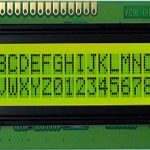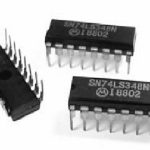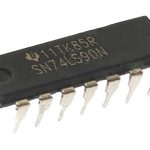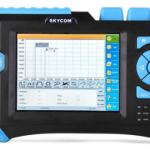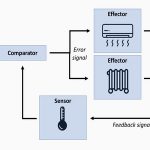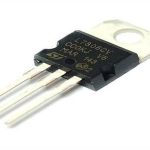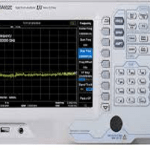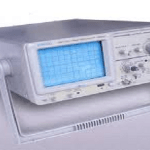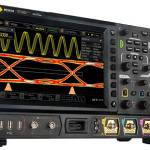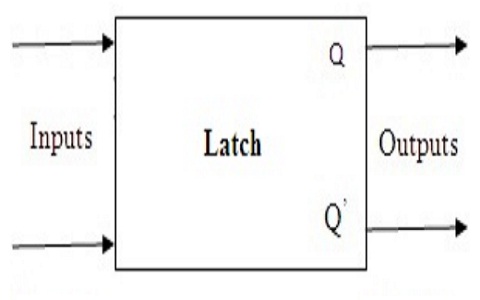In LCD 16x2, the term LCD stands for Liquid Crystal Display that uses a plane panel display technology, used in screens of computer monitors & TVs, smartphones, tablets, mobile devices, etc. Both the displays like LCD & CRTs look the same but their operation is different. Instead of electrons diffraction at a glass display, a liquid crystal display has a backlight that provides light to each pixel that is arranged in a rectangular network. Every pixel includes a blue, red, green … [Read more...]
What is Priority Encoder : Working & Its Applications
A combinational circuit like an encoder is used to perform the reverse process of the decoder. An encoder includes 2n inputs maximum and ‘n’ outputs. Therefore it encodes the data from 2n inputs into an n-bit code. It will generate a binary code that is equal to the input like active High. So, this circuit encodes 2n inputs through n-bits. Encoding is nothing but the process of changing the numbers or symbols to a coded format. A priority encoder includes a priority function that allows it to … [Read more...]
What is BCD Counter : Design & Its Operation
In the scope of digital logics, a counter is a tool that accumulates the information of how many times a specific process or event is occurring probably like a clock. The generally used type is a sequential digital logic circuit having an input line termed as a clock and has multiple output lines and the values those are on the output lines signify a number in the binary system. Every pulse that acts as input to the clock either increases or decreases the numbers count on the counter. With this … [Read more...]
What is Optical Time-Domain Reflectometer & Its Working
For better communication to take place between two ends, there should be a proper transmission of information from one end to another. There has been a tremendous evolution of the communication systems to make the communication process faster, reliable, and safer. It has evolved from analog to digital, wired to wireless. One of the modes of communication that are highly used nowadays is Fiber Optic Communication. In this mode, using infrared ray pulses information is transmitted from one place … [Read more...]
What is a Closed-Loop Control System & Its Working
A Control system is a method of connecting devices so that we can manage, direct and control the behavior of other devices using control loops. Apparently, it is a system that controls other systems. Control systems are classified as Linear control systems and Non- Linear control systems, Analog or continuous systems, Digital or Discrete systems, single input single output systems, Multiple inputs multiple-output systems, etc.. . The control system that follows the principle of homogeneity and … [Read more...]
What is an LDO Regulator : Working & Its Parameters
When integrating a voltage supply to any other equipment, we may encounter certain unwanted voltage variations. These variations at the voltage supply level can cause severe damage to the devices. So, there is a need to maintain a constant voltage at the supply level. This is where 'Voltage Regulator' comes into the picture. Voltage regulators are the devices that maintain a stable output voltage irrespective of the changes at the input voltage and load. Based on their design there are various … [Read more...]
What is Spectrum Analyzer : Types & Its Applications
The one device which is more prominent in this digital industry is Spectrum Analyzer. This device holds a nearly 50-year history which consists of surmounting multiple complications in introducing the product to the real-time market. The development of the device initially took place at Applied Research Laboratories of Columbia University. The first developed spectrum uses glass acoustic delay lines, and it delivers real-time processing in the range of 1 – 40 kHz. And the initial development s … [Read more...]
What is Dual Trace Oscilloscope : Working & Its Uses
The discovery of cathode-ray tubes happened in the year 19th century. In that period, the main intention of CRTs was mainly to explain and investigate the theory of the electron and this concept was known as cathode rays. And in the year 1897, a scientist named Karl Ferdinand Braun discovered the CRT oscilloscope. Whereas the invention of the dual-trace oscilloscope took place in the year 1930 by the British organization A.C. Cossor. The current day oscilloscope is the outcome of a various … [Read more...]
What is a Sampling Oscilloscope : Working & Its Applications
In the year 1897, the discovery of the Braun tube took place and in 1899, Jonathan included it along with magnetic field and beam developing plates in order to sweep the trace. In the initial period of 1920, cathode ray tubes were used practically for laboratory calculations but experienced bad strength of the vacuum and cathode emitters. To eliminate this drawback, Zworykin in the year 1931 discovered an approach of sealing the cathode ray tube using a thermionic emitter. This approach … [Read more...]
What is a Latch : Different Types and Their Applications
The digital circuits made of logic gates as the basic devices. This leads to the formation of combination circuits and sequential circuits. The circuit design must have a memory element present in it. This element stores the data required for processing the code and the stored information is needed for the program during computing. The memories are treated as the key components in digital electronics. These storage devices are termed as a latch. Individual logic gates don't have any capability … [Read more...]
